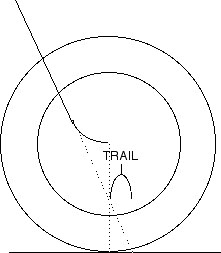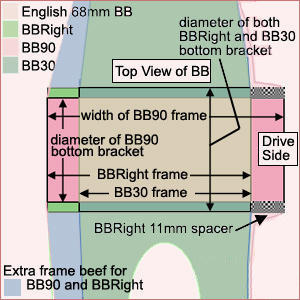Frame Stiffness

What follows below may be a line of reasoning I have to eventually repudiate. My intention is to deliver my thesis with maximum caution and minimum hubris, in case I need to eat crow later.
What's driving my current train of thinking is my sense that road race bikes just don't seem to me to handle the way they used to. It's not like I pine for the good old days. I'm just saying that on all the new road race bikes—especially those that are really upper end—when I get out of the saddle… it's not the same as it used to be.
This mystified me for some time, because I look on geometry charts and the bikes are built "correctly" or, at least, they're built according to how I'd design a sprightly handler.
It isn't the frame material, per se. It's not like the bikes feel "dead" and frankly I'm highly suspect of anybody who thinks he can divine "deadness" or "liveliness" as a function of frame material choice.
STIFFNESS
What I do note, however, is stiffness. Frames these days, from dropout to dropout, are very stiff in every axis. And this is good. The bikes these days are extremely stable, they corner, descend and "just ride along" better than anything I've ever ridden in any prior era.
Except when I'm out of the saddle. The bikes want to track straight ahead. They do not react with the fluidity with which I'm historically most comfortable.
I think I might know why this is. It's precisely the fruit of what makes these bikes really great in every other way: stiffness.
There are at least five design elements in bikes today that conspire to make bikes extremely stiff: 1) Carbon monocoque construction allows bike designers to make bikes of any size stiff—inflexible—because the sizes, shapes, diameters, and lay up schedules can create a bike that won't flex underneath any rider of any size and any power; 2) Bottom Bracket standards have changed, with certain standards like BB90 and BBRight really making bikes incredibly stiff in the BB area (You can read here on Slowtwitch an explanation of the bottom bracket standards available today, and what they mean for stance width, splay-footedness, and so forth); 3) Integrated headsets have stiffened the front ends of bikes; 4) Steerers are now almost exclusively 1 1/8" in diameter; 5) Steerers are also often tapered, with larger diameter tubes at the crown race seat.
STATIC VERSUS DYNAMIC GEOMETRY
There is a term I've come across called "dynamic trail." I honestly don't know what the users of this term refer to. And I'm on the record as discounting this as a factor—whatever it means—when it comes to tri bikes. But on road bikes, if it means what I think it means (and what I've decided it means for the purposes of this discussion), then it certainly might matter.
The gods of cycling have smiled upon me, in that I've ridden bikes made during each of the four decades preceding the one we're now in. With the luxury of this tenure I know how bikes built in previous generations used to ride, for better and for worse. A hallmark of bikes built prior to carbon monocoque was "wind-up." When you step on the gas, the bike flexed. Every which way.
Now, hang with me here. When bikes of older designs flexed—and especially when the fork flexed, which forks tended in earlier constructions to do to a greater degree than today—the geometry changed. Forks flex along their blades, and their steerers flex in between the headset bearings. When the fork flexes, at that moment, the fork's offset increases. The trail decreases. Hence—on paper at least—the bike becomes less inclined to self-center. The bike becomes easier to steer from side-to-side. When would forks flex? Among other times, when you're out of the saddle.
Further, the rest of the bike is also changing in geometry when it's under load (i.e., when out of the saddle climbing or sprinting). The head tube is now pulled out of true relative to the seat tube (these two tubes are no longer in line with each other in the vertical plane). What difference does this make to the way the bike "cooperates" when out of the saddle? I don't know. But in my mind's eye I think of the camber of a ski, and how that helps carve a turn. Maybe I'm making an analogy here that has no proper bearing on bike riding.
The point is this: With today's bikes, there is much less change between static and dynamic geometry than what existed in generations past. It seems to me the delta between static and dynamic trail, for example, has shrunk over the past decade. Likewise for every other metric that might measure the twisting and torquing that occurs while riding a bike.
FIELD TESTING
I've had two bike engineers, each working at companies that sponsor pro tour teams, report to me the dirty little secret: The pros they sponsor can't really tell the difference between various bikes with various forks. The facts are these: 1) Neither the gyroscopic effect of the wheels, nor the camber effect offered the bike through its trail, keeps the bike upright—you the rider keep the bike upright, through the exceptional motor skills you have, whether you know it or not, that grant you an exceptional capacity to balance; 2) You can get used to anything.
This isn't to say geometry doesn't matter. It's just say that whatever the bike's geometry, whether wisely- or ill-conceived during its design, refer to rule 2 above: You'll just get used to it.
Furthermore, the pros riding today do not have the benefit of having ridden the bikes that I rode back in the 1970s and 1980s. When I talk of bikes that had exceptional out-of-the-saddle capabilities, how would the pros today be expected to know about or respond to this?
TRI VERSUS ROAD
The tri bikes built today have no drawbacks versus those built in prior eras. The exceptional stiffness of these bikes are all positive and not in any way negative. To the degree this stiffness has allowed these bikes to ride true and straight; to not suffer from the bad behaviors common to whippier constructions; to be less prone to failure; to be more vibration and oscillation resistant; I can't imagine anything about the ride quality of today's tri bikes that carbon monocoque construction does not aid.
Likewise road bikes. Except with this sole issue of out-of-the-saddle steering and handling quality.
GOING FORWARD
I don't know whether it makes sense to consider changing geometries of road race bikes to normalize for the extra stiffness inherent in today's framesets. Should a road bike built with 55mm of trail be instead built with 52mm of trail? I don't know. I'm noodling the idea of getting my hands on some aftermarket forks and testing this out myself.
However, maybe the characteristics I'm pining after are not steering geometry related at all. Perhaps there's something in the frame wind-up in days of old that grant me that sensation when out-of-the-saddle.
Maybe it's best just to get used to the way bikes today ride when out of the saddle, since they are so obviously superior in their handling in every other way.
Maybe all of this is a figment of my imagination. Maybe it's an early warning sign of impending dementia. I don't know.
In any case, this article is not intended to be constructed as having a beginning, middle and end. Rather, as having a beginning, followed by the end of the beginning. I'd like to hear bike designers and product managers (and anybody else who has a view) continue this conversation, perhaps using the Facebook comment utility embedded in our architecture, such comments appending below this article.



